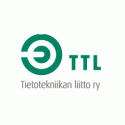We setup social web services and platforms to improve: collaboration, awareness, creativity, efficiency, and knowledge generation. We are also specialists at enhancing collaboration between multiple different organizations. We know how to mix established social media tools to create collaboration environments that are stable, focused, cost effective, and flexible.
Continue ReadingSosiaalinen media toimii sisäisessä viestinnässä myös julkisella sektorilla
Zipipop Oy
Mediatiedote 21.10.2010
Vapaa julkaistavaksi heti
Sosiaalinen media toimii sisäisessä viestinnässä myös julkisella sektorilla Työ- ja elinkeinoministeriön koordinoiman Osaamiskeskusohjelman toimijat ovat kokeilleet keväästä lähtien yhteisöllisen median työkaluja osaamiskeskusten välisessä viestinnässä. Kokeilun tulokset ovat olleet niin lupaavia, että työkalut otetaan käyttöön kaikissa 22 eri puolella Suomea toimivissa osaamiskeskuksissa. Tällöin yhteinen työtila on 150 henkilön käytössä.
Osaamiskeskusten välisen viestinnän ytimessä on sosiaalisen median toimisto Zipipopin kehittämä, Sitesiin perustuva ympäristö. “Zipipopin luoma organisaatioiden välinen yhteistyöalusta on osoittautunut erittäin toimivaksi, sillä sen avulla voidaan selkeästi tehostaa viestintää ja yhteistyötä yli organisaatiorajojen”, toteaa myös Enterprise -liiketoiminnasta Suomessa vastaava Marko Saarinen.
“Ohjelmassa työskentelee noin 150 asiantuntijaa eri puolilla maata samojen teemojen ja asioiden parissa, joten tiedon ja osaamisen jakaminen on tehokkaan ja tuloksellisen toiminnan kannalta erityisen tärkeää. Sosiaalisen median toimintaperiaatteet ovat jo nyt parantaneet viestintää ja helpottaneet yhdessä tekemistä”, kertoo osaamiskeskusohjelman viestinnän kehittämisestä vastaava Riikka Pellikka työ- ja elinkeinoministeriöstä. “Vaikka monilla projektiin osallistuneilla ei ole ollut aiempaa kokemusta yhteisöllisistä medioista, Zipipopin järjestämien koulutusten avulla kaikki mukana olleet ovat päässeet täysipainoisesti hyödyntämään uutta teknologiaa”, hän jatkaa.
Zipipop on vuonna 2007 perustettu sosiaalisen median asiantuntijayritys, jonka Tietoviikko-lehti valitsi vuoden 2010 kiinnostavimmaksi it-alan startupiksi. Zipipop voitti myös 2008 kansainvälisessä Barcelonassa Mobile 2.0-tapahtumassa Euroopan lupaavimman alkuvaiheen yrityksen palkinnon. Osaamiskeskusohjelma on työ- ja elinkeinoministeriön koordinoima ja alueiden kehittämislain mukainen määräaikainen erityisohjelma. Ohjelmalla suunnataan paikallisia, alueellisia ja kansallisia voimavaroja huippuosaamisen hyödyntämiseen. Osaamiskeskusohjelmalla tuetaan alueellisia vahvuuksia,
alueiden erikoistumista ja osaamiskeskusten välistä yhteistyötä.
Zipipopin kotisivut: http://www.zipipop.com/
Tietoa Osaamiskeskusten yhteistyöympäristöstä (in English):
http://www.slideshare.net/Zipipop/oske-collaboration-enivronment12october2010-5504026









